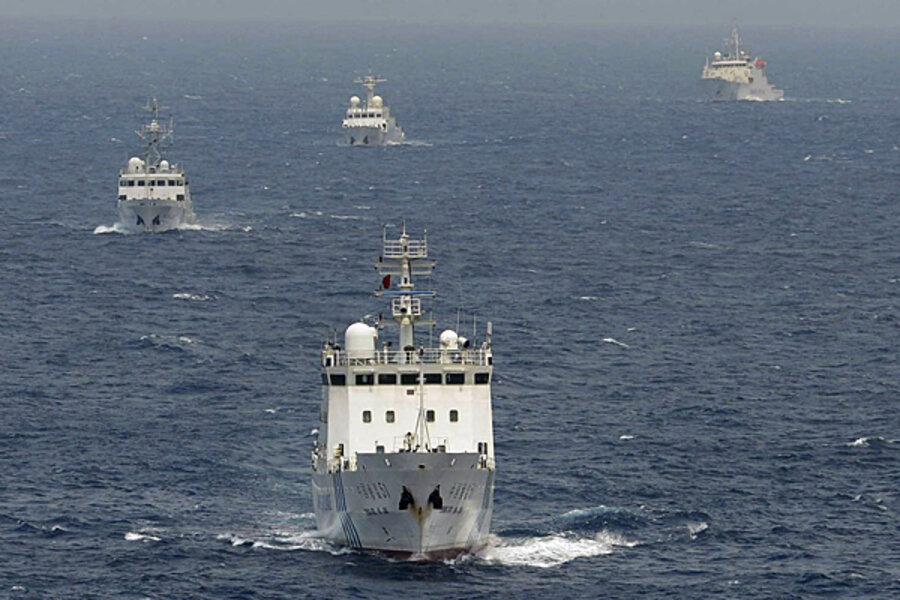China sends largest fleet yet to disputed islands
Loading...
| Taipei, Taiwan
Spats between Asia’s two most powerful nations, China and Japan, have grown uncomfortably routine since Tokyo nationalized a group of disputed islands in September. On Tuesday tensions reached a new and potentially worrisome high.
China sent eight surveillance vessels into Japanese territorial waters, apparently to track a flotilla of Japanese activists who had gone to look at the contested area. China’s presence – an effort to exercise authority in the region – is its largest since Japan nationalized the uninhabited islets, Kyodo News reported.
China’s use of ships in disputed waters isn’t expected to cause a war, but it raises the specter of a miscalculation at sea that could in turn create a new diplomatic row, set off more protests in Chinese cities, and strike another blow at Japanese business caught in the crossfire. Hopes of polite negotiations are also off the map for now.
"Only when Japan faces up to its aggressive past can it embrace the future and develop friendly relations with its Asian neighbors," Chinese Foreign Ministry spokeswoman Hua Chunying told a news conference on Monday.
As if the 80 pro-Tokyo activists weren’t enough to upset Beijing, that same day 168 Japanese lawmakers visited a Shinto shrine that’s reviled elsewhere in Asia for memorializing World War II heroes. Japan occupied parts of China from 1931 to 1945. Three cabinet ministers had already visited Yasukuni Shrine over the weekend, causing calculated reaction.
In protest, a high-level Chinese military official bailed on a trip this week to Japan as the Foreign Ministry lashed out.
And China’s surveillance vessels probably weren’t loaded with olive branches. The Communist country has increasingly jousted with Japan since around 2005 as it rose to become the world’s second largest economy.
“Such an intrusion [in the East China Sea] was certainly not undertaken spontaneously, but would have been planned and coordinated some time in advance for execution as soon as an opportunity presented itself,” says Scott Harold, associate political scientist with US-based think tank the RAND Corporation.
Japan controls the disputed islets, which it calls the Senkaku, despite 40 years of competing claims from China and a wave of destructive anti-Japanese street protests in Chinese cities last year. China criticizes the Shinto shrine visits because a memorial at the venue also honors 14 major war criminals.
The two sides are also disputing rights to an undersea natural gas field, while China periodically accuses Japan of not apologizing for the war of the 1940s. Japan says it has apologized.
China and Japan, as the world’s No. 2 and No. 3 economies, also mean a lot to each other trade-wise. The number of Japanese subsidiaries in China has grown eight times since the 1990s, and they sold $147 billion worth of goods to the country in the 2011 fiscal year.
Will the two keep meeting, along with South Korea, to discuss a three-way trade agreement? After momentum last month, the latest events raise concern that this puts progress on ice.
“Both sides need to be more flexible,” suggests Ralph Cossa, president with US think tank Pacific Forum Center for Strategic and International Studies. “Japan needs to acknowledge that the territory is in dispute, at least from a Chinese perspective, and the Chinese need to acknowledge that they are under Japan’s administrative control and that a military solution is unacceptable.”








